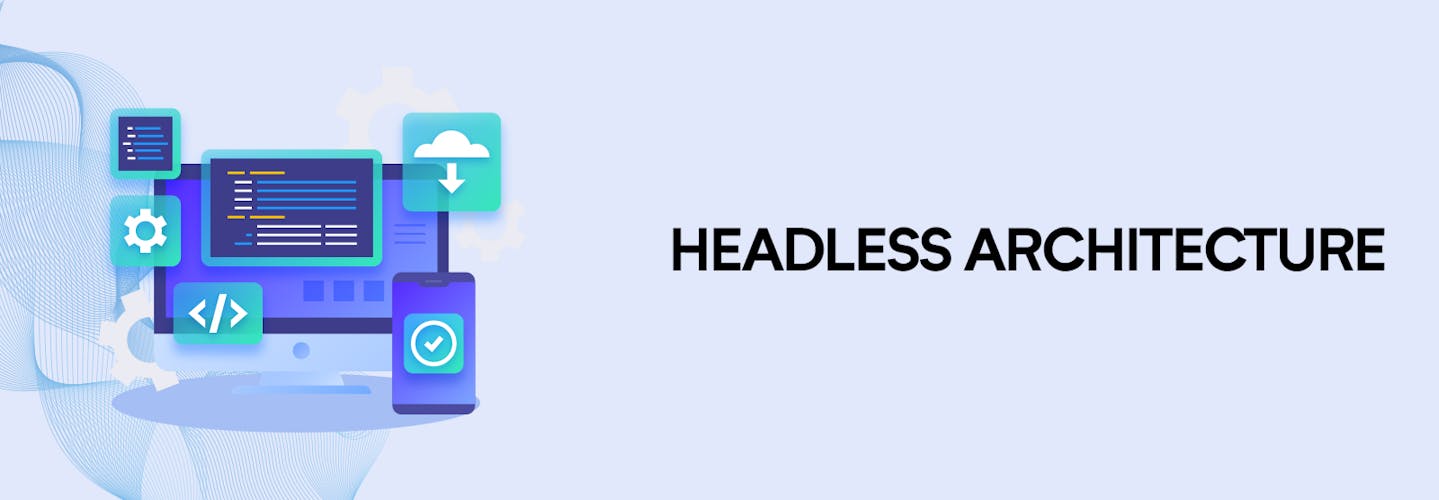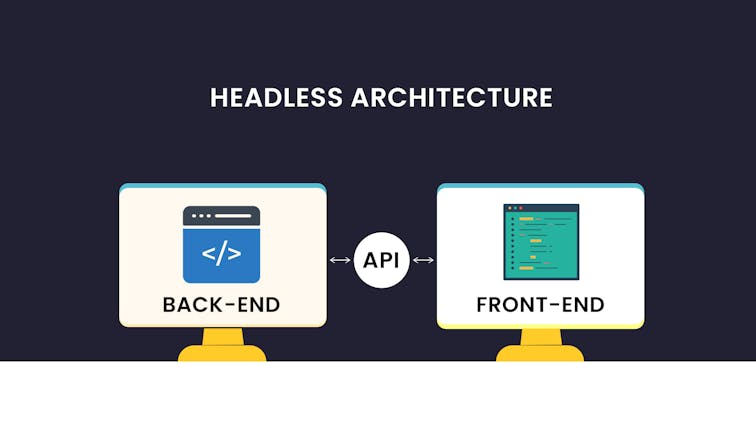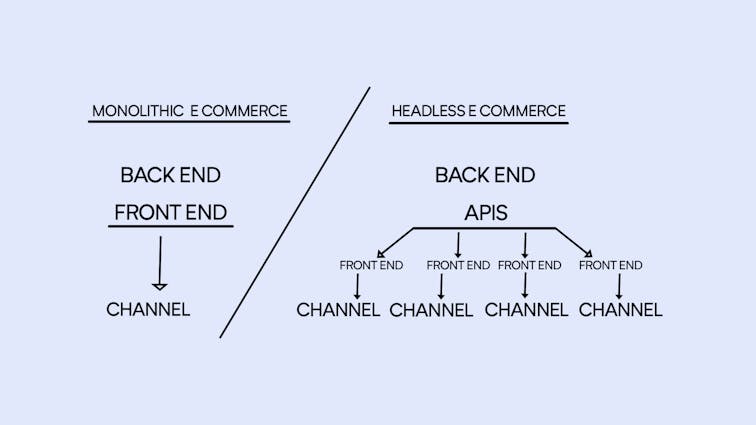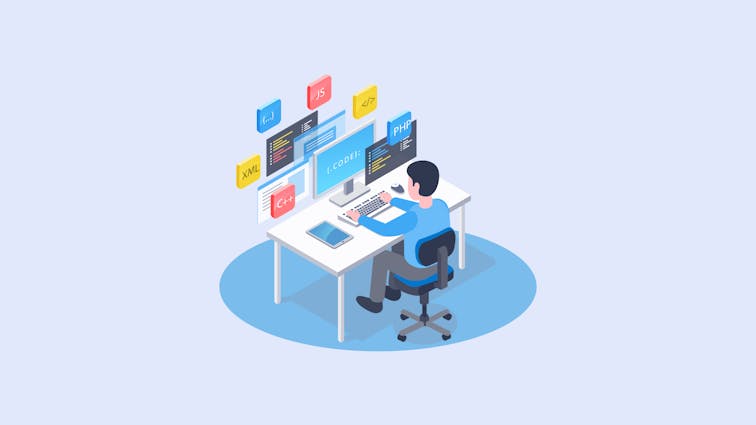
Unlocking Headless Architecture: Why It's a Big Deal for the Future!
Have you ever wondered how the digital world is evolving at such a breakneck pace?
Well, today is your lucky day.
We’re about to dive into one of the most revolutionary concepts in modern software development - Headless Commerce Systems.
Why should you care?
Because if you’re in the e-commerce space, this is a game-changer.
So, buckle up as we unravel the mysteries of headless architecture and how it’s transforming the way businesses operate online.
In the good old days, websites and their backend systems were tightly knit together.
But, as Bob Dylan said, “The times they are a-changing.” Headless architecture is the new kid on the block, and it’s here to stay.
Importance of Headless commerce Architecture in Modern Software Development
Imagine a world where your website’s frontend and backend are best buddies but not inseparable.
They can work independently, and that’s the beauty of headless architecture. It’s like having your cake and eating it too!
Purpose of the Article
We’re here to take you on a journey through the ins and outs of headless architecture, especially in the realm of e-commerce.
Whether you’re a business owner, a developer, or just a curious soul, there’s something for everyone.
What is Headless Architecture?

Let’s get down to brass tacks. What exactly is headless architecture? In simple terms, it’s a design where the frontend (the head) and the backend (the body) are separated.
Imagine a Lego set; you can mix and match different pieces to create whatever you want. That’s headless architecture for you!
Separation of Frontend and Backend Layers
Why is this separation such a big deal?
Well, it allows developers to work on the frontend without worrying about the backend and vice versa.
It’s like having a team of chefs where one focuses on the appetizers and the other on the main course. They can perfect their dishes without getting in each other’s way.
Key Components of a Headless System
1. Headless Frontend
This is the face of your website. It’s what your customers see and interact with. In a headless system, the frontend is free to be as creative and dynamic as you want it to be.
2. Headless Commerce Platform
This is the engine that powers your e-commerce operations. It handles everything from product management to checkout, all without dictating how things should look on the frontend.
3. Headless CMS
A Content Management System (CMS) that lets you manage and publish content, but without a predefined frontend. It’s like being a painter with an infinite canvas.
4. Search and Payment Solutions
These are the essential tools that make your e-commerce site functional. From helping customers find what they’re looking for to ensuring smooth transactions, they’re the unsung heroes of your site.
Adoption of Headless Architecture in the E-commerce Industry
1. Introduction to Headless Commerce
Headless commerce is the application of headless architecture in the e-commerce space.
It’s like giving your online store a superpower. You can change, adapt, and innovate without any constraints.
2. Composable Commerce and Its Benefits
Composable commerce is like building your online store with building blocks. You can choose the best components for your needs and easily swap them out as you grow.
It offers flexibility, scalability, and faster innovation. Did you know that businesses that adopt composable commerce see an average increase in conversion rates by 40%? That’s huge!
Why Headless Commerce is the Future ?

Now, let’s talk. Why is everyone raving about headless commerce?
A. Unmatched Flexibility
First off, the flexibility is unmatched. You can tailor your storefront to the exact needs of your business without being held back by backend limitations.
It’s like being a fashion designer with an endless array of fabrics and patterns at your disposal.
B. Faster Time to Market
Time is money, folks! With headless commerce, you can get your products and services out there faster than ever.
No need to wait for the backend to catch up. Your marketing team will thank you.
C. Personalized Customer Experiences
Who doesn’t love a personal touch? With headless commerce, you can create bespoke experiences for your customers. They’ll feel like the VIPs they are.
D. Scalability
Your business isn’t static, and your website shouldn’t be either. Headless commerce grows with you.
Whether you’re expanding your product line or going global, it’s got your back.
What is Headless Commerce Platform ?

Let’s take a moment to understand what a Headless Commerce Platform is.
In the simplest terms, it’s the engine that powers your e-commerce operations. It handles everything from product management to checkout, all without dictating how things should look on the frontend.
Why is this important? Because it gives you the freedom to create a unique and engaging customer experience.
It’s like being a chef in a kitchen full of ingredients. You can whip up whatever dish you want, and the headless commerce platform will make sure it’s served perfectly.
A. Comparison Between Headless Architecture and Microservices
Now, you might be wondering, “Isn’t this the same as microservices?”
Well, not quite. While both headless architecture and microservices aim to break down monolithic systems into more manageable parts, they do so in slightly different ways.
Headless architecture separates the frontend and backend, allowing them to operate independently.
On the other hand, microservices break down the backend into smaller, self-contained services.
It’s like comparing a two-piece puzzle (headless) with a 1000-piece puzzle (microservices). Both are puzzles, but they offer different levels of complexity and flexibility.
B. Clarifying the Difference Between Headless Architecture and Microservices
So, to clarify, while both headless architecture and microservices aim to provide flexibility and scalability, they do so in different ways.
Headless architecture focuses on separating the user-facing side of things from the backend operations.
Microservices, meanwhile, break down those backend operations into smaller, more manageable pieces.
Think of it like a restaurant. In a headless architecture, the kitchen (backend) and the dining room (frontend) are separate but work together to provide a great dining experience.
In a microservices architecture, the kitchen is further divided into stations (like grilling, sautéing, and plating), each responsible for a specific part of the meal preparation.
C. Role of Headless Commerce Platform in Enabling Composable Architecture
Now, where does a headless commerce platform fit into all of this? It plays a crucial role in enabling what we call a composable architecture.
In a composable architecture, you can pick and choose different components (like CMS, payment gateway, or search functionality) and put them together like Lego blocks to build your unique e-commerce platform.
A headless commerce platform is like the base of your Lego structure. It provides the core e-commerce functionality, while you’re free to add on other components as you see fit. This way, you can create a system that perfectly fits your business needs and can easily adapt as those needs change.
Benefits of Headless Architecture
A. Flexibility and Freedom in Choosing Frontend Technologies
One of the biggest advantages of headless architecture is the flexibility it offers. You’re not tied down to a specific technology for your frontend.
Want to use React for your website, but Vue for your mobile app? Go ahead! The backend won’t mind. It’s like being a kid in a candy store, you can pick and choose whatever you like!
B. Omnichannel Capabilities and Marketing Agility
Headless architecture also opens the door to omnichannel capabilities.
You can deliver a consistent experience across all platforms - be it web, mobile, or even IoT devices.
Plus, your marketing team can roll out campaigns faster without waiting for backend changes. It’s like having a superpower that lets you be everywhere at once!
C. Improved Customer Experience and Personalization
With the freedom to design your frontend without backend constraints, you can create a truly personalized experience for your customers.
You can tailor the user interface, navigation, and even the content to match your customers’ preferences. It’s like having a personal stylist for every customer!
D. Faster Loading Times and Enhanced Web Performance
Headless architecture can also lead to faster loading times and better web performance. Since the frontend and backend are separate, changes in one don’t affect the other.
This means your website can run smoothly and quickly, even during peak traffic times. It’s like having a highway all to yourself!
E. Competitive Edge in the eCommerce Market
In today’s fast-paced eCommerce market, staying ahead of the competition is crucial. With headless architecture, you can quickly adapt to market trends and customer demands.
You can innovate and experiment without being held back by your backend system. It’s like being in the driver’s seat of a high-speed race car!
F. Other Benefits of Headless Commerce
There are many other benefits of headless commerce, including easier scalability, better SEO, and lower maintenance costs.
It’s a comprehensive solution that can cater to all your eCommerce needs.
Transitioning from Monolithic Systems to Headless Architecture

A. Introduction to Monolithic Architecture
Before we dive into the transition, let’s understand what we’re moving away from - monolithic architecture.
In a monolithic system, all the functionalities are tightly coupled and run as a single service. It’s like a one-man band, where one person is trying to play all the instruments.
B. Limitations and Drawbacks of Monolithic Systems
While monolithic systems have their advantages, they come with several limitations.
They can be difficult to scale, hard to maintain, and slow to adapt to changes. It’s like trying to steer a large ship - it takes a lot of effort and time to change direction.
C. Incompatibility with Market Trends and Slow Adaptation
In today’s dynamic market, being slow to adapt can be a death sentence.
Monolithic systems often struggle to keep up with market trends and customer demands. It’s like trying to run a race in heavy boots.
D. Challenges in Making Changes and Coding Updates
Making changes in a monolithic system can be a nightmare.
A small change in one part can affect the entire system, leading to longer development cycles and higher chances of errors.
It’s like trying to change one piece in a complex jigsaw puzzle.
E. Dependency on a Single Service Provider
With a monolithic system, you’re often dependent on a single service provider.
This can lead to vendor lock-in, where you’re stuck with whatever tools and technologies the provider offers. It’s like eating at a restaurant where you can only order from a fixed menu.
Transitioning to a headless architecture can liberate you from these limitations, giving you the freedom to innovate, adapt, and grow in the fast-paced eCommerce market. It’s like breaking free from a cocoon and spreading your wings to fly!
Remember, the transition may come with its own set of challenges, but the benefits it offers are worth the effort.
So, are you ready to take the leap into the future of eCommerce with headless architecture? The sky’s the limit!
Related: Headless Commerce vs Traditional Commerce: Which One Is Better for Your Business?
Case Studies of Companies Transitioning to Headless Architecture
Let’s take a real-world tour and see how some big names made the switch to headless architecture and never looked back.
1. Netflix
Ah, Netflix, our beloved companion for those binge-watching weekends. Did you know that Netflix was one of the early adopters of headless architecture?
They switched from a monolithic system to a microservices-based headless architecture.
This allowed them to scale massively and deliver a seamless streaming experience to millions of users worldwide.
It’s like they built a cinema that can host an unlimited number of screens!
2. Amazon
The giant of eCommerce, Amazon, also embraced headless architecture.
This enabled them to innovate rapidly, scale to handle an enormous catalog, and provide a personalized shopping experience for each customer.
Imagine a shopping mall that can expand instantly and has a store customized just for you!
3. Uber
Uber, the company that revolutionized transportation, uses a headless architecture to ensure a fast and reliable service for its users.
This architecture allows them to operate in multiple countries with different regulations and currencies. It’s like having a fleet of cars that can adapt to drive on any side of the road!
4. Zalando, Zadig & Voltaire, and Tally Weijl
In the fashion industry, Zalando, Zadig & Voltaire, and Tally Weijl have adopted headless commerce.
This allows them to quickly adapt to fashion trends, manage a vast catalog, and provide a unique shopping experience.
It’s like having a runway show where the catwalk can change themes in an instant!
Related: 24 Best Examples of Headless Commerce
Headless Architecture for Businesses of All Sizes

A. Democratization of Headless Commerce
Headless commerce isn’t just for the big players. It’s becoming more accessible for businesses of all sizes.
With various platforms and tools available, even small businesses can now reap the benefits of headless commerce. It’s like gourmet cooking becoming accessible to home chefs!
B. Agile Integration of New Functionalities with Existing Monoliths
One of the beauties of headless architecture is that you don’t have to rebuild from scratch.
You can gradually integrate new functionalities into your existing monolithic system. It’s like upgrading your car piece by piece instead of buying a new one.
C. Management of Multiple Platforms Under a Single Frontend
With headless architecture, you can manage multiple platforms like web, mobile, and POS under a single frontend.
This makes managing your online presence much more streamlined. Imagine having a universal remote for all your devices!
D. Potential for Scalability and Growth in Any Business
Whether you’re a startup or an established business, headless architecture offers the potential for scalability and growth. It’s like planting a seed that can grow into a tree of any size!
Embracing Headless Architecture as the Future
A. Advantages of Headless Architecture in eCommerce
From flexibility and scalability to improved customer experience, the advantages of headless architecture in eCommerce are numerous.
It’s like finding a magic lamp that grants endless wishes!
B. Building Systems with Loosely Coupled Elements
Headless architecture allows you to build systems with loosely coupled elements. This means that each component of your system can operate independently.
It’s like having a team where each player knows exactly what to do.
C. Independent Development and Communication Through APIs
With headless architecture, different parts of your system can communicate through APIs. This allows for independent development and faster innovation. It’s like speaking a universal language that everyone understands!
D. Addressing the Needs and Requirements of Modern Businesses
In the fast-paced world of eCommerce, businesses need to be agile and adaptable. Headless architecture addresses these needs by allowing for rapid innovation, scalability, and customization. It’s like having a Swiss Army knife; you have a tool for every situation!
Related: Is Headless Commerce The Future Of Ecommerce?
Are You Ready to Go Headless with Aasaan?
We’ve taken a deep dive into the world of headless solutions, and now it’s time to ask the big question: Are you ready to go headless with Aasaan?
At Aasaan, we’re not just about providing solutions; we’re about transforming businesses. We’re about helping you adapt, innovate, and stay ahead in the fast-paced world of eCommerce. We’re about turning challenges into opportunities and dreams into reality.
With our expertise in headless commerce, we can help you create a flexible, scalable, and customer-centric eCommerce platform. We can help you break free from the constraints of traditional systems and embrace the endless possibilities of the digital world.
So, are you ready to take the leap? Are you ready to redefine your business and create unparalleled customer experiences? Are you ready to go headless with Aasaan?
If your answer is yes, we’re here to guide you every step of the way. Let’s embark on this exciting journey together. Let’s create a future where your business is not just surviving, but thriving.
Are you ready? Let’s go headless with Aasaan!
For more information or to schedule a demo, feel free to reach out to us. We can’t wait to start this exciting journey with you!
Wrapping It Up: Is Headless Commerce Right for You?
So, we’ve taken a whirlwind tour of headless commerce. Now the million-dollar question: is it right for your business?
If you value flexibility, speed, and customer experience, then the answer is a resounding YES. It’s not just a trend; it’s the future of e-commerce.
But remember, with great power comes great responsibility. Make sure you have the right team and tools to make the most of headless commerce.
Are you ready to take the leap into the future of e-commerce? Headless commerce is waiting with open arms. Embrace the change, and watch your business soar to new heights.
Thank you for joining me on this exciting journey! If you have any questions or want to share your experiences with headless commerce, don’t hesitate to reach out. Let’s keep the conversation going!
Happy selling!
FAQ’s:
1. What is headless commerce architecture?
Headless commerce architecture is a design approach in e-commerce where the front-end presentation layer (the “head”) is decoupled from the back-end functionalities like product management, customer management, and order management. This separation allows developers to make changes or updates to the front-end without affecting the back-end operations. It also enables businesses to deliver a consistent shopping experience across multiple channels, such as mobile apps, social media, and IoT devices, as they can all pull from the same back-end.
2. What is the difference between headless and microservices?
While both headless and microservices architectures aim to create flexibility and scalability, they differ in their approach. Headless architecture refers to the separation of the front-end and back-end of a system, allowing each to operate independently. On the other hand, microservices architecture breaks down the back-end functionalities into smaller, independent services that can be developed, deployed, and scaled individually. In other words, headless focuses on the separation of user interface from business logic, while microservices focus on breaking down the business logic into smaller, manageable parts.
3. What are the components of headless commerce?
The main components of headless commerce include:
- Back-end system: This includes product information management (PIM), order management system (OMS), and customer relationship management (CRM). These systems handle the business logic of the e-commerce platform.
- APIs: Application Programming Interfaces (APIs) are used to connect the back-end system with the front-end presentation layer. They allow the front-end to access and display data from the back-end.
- Front-end layer: This is the user interface that customers interact with. It can be a website, mobile app, or any other digital platform. In a headless commerce architecture, the front-end layer can be changed or updated without affecting the back-end system.
4. What is headless vs serverless?
Headless and serverless are two different architectural paradigms. As mentioned earlier, headless refers to the decoupling of the front-end and back-end of a system. Serverless, on the other hand, refers to an architecture where the server management and capacity planning decisions are completely abstracted away from the developer. In a serverless architecture, you can run your code without having to manage the underlying infrastructure. The two concepts can be used together: a headless system can be serverless, and a serverless system can be headless.
5. What is monolithic vs headless commerce?
Monolithic and headless commerce represent two different approaches to building e-commerce platforms. In a monolithic architecture, the front-end and back-end are tightly coupled together, meaning changes to one can impact the other. This can make updates and scaling more challenging. On the other hand, headless commerce separates the front-end and back-end, allowing for more flexibility and scalability. This makes it easier to make changes, integrate with other systems, and deliver a consistent experience across multiple channels.








